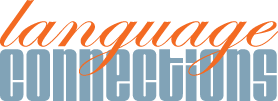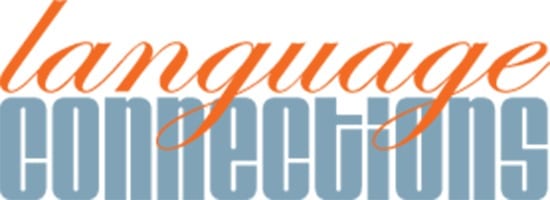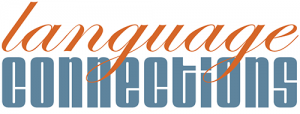Clinical trials are increasingly multinational, involving up to ten study centers and several different countries. As a result, and to meet both local and international good manufacturing practices (GMP) regulations, bio- pharmaceutical products often must have multilingual labels. This can be daunting for companies conducting multinational trials or expanding into international markets.
Multilingual Labeling for International Clinical Trials
Multilingual labeling is an important step when pharmaceutical companies look to test (and later sell) their products internationally. When performing clinical trials for drug related treatments in foreign countries, it is expected that all product labels are translated.
Not only must they be translated (and therefore localized) into the native languages of the intended users, they must do so with strict adherence to local regulations.
There are a variety of regulatory requirements that must be met – varying depending on region – as well as the user’s overall understanding to take into consideration. Regulatory agencies include local governments, as well as some major bodies including:
- The Food and Drug Administration (FDA)
- The European Union (EU)
- The Japanese Ministry of Health, Labor, and Welfare (MHLW)
- The China Food and Drug Administration (CFDA)
It should come as no surprise that these projects can get complicated and costly.
Why Is This Important For Clinical Trials?
When testing experimental drugs, the outcomes of patients and the treatment itself rely fully on patients and doctors following usage instructions properly. This includes proper dosages and treatment schedules.
If this information is not clear to the participants, both the trial and the patients are at risk.
Using our years of experience as a language service provider (LSP) in the life science industry, we have compiled a short list of tips for multilingual drug labeling. Read on to find out more, and check out our infographic on multilingual labeling below!
Tips For Translating Product Labels For International Use
1.Develop a region-specific drug label for areas with similar regulatory requirements, in the dominant languages for those regions.
As an example, you can develop a source label that encompasses the regulations for all NAFTA countries. From there you can then localize and translate them into the dominant languages of each region. These include English, French, and Spanish depending on the country.
For EU member countries, regulations must be in accordance with European Commission requirements. Therefore, source labels can be created with this in mind. Regarding language translation services, there are very specific and strict regulations when trying to enter the EU market. For a drug or medical device to be sold within the European Union, it is compulsory that all accompanying documents are translated into at least one of its 24 official languages.
On top of that, the countries where the drug will be tested or marketed may require additional languages based on those spoken by a majority of its population.
While encompassing EU regulations can make it easier to streamline the preparation of your labels, you must keep in mind that individual countries in the European Union can also have additional regulations that drug companies must adhere to.
2. Consider using an Expanded-Content Label to meet multilingual labeling requirements.
Multilingual booklet labels and instructions are not only useful, but they are often a requirement. In cases where drugs are to be tested and marketed in several different countries, multiple language labeling requirements can be adequately met using the Expanded-Content Label (ECL) system as it allows for more space.
ECLs will make it easier for the manufacturer to get its product to different markets, as it won’t be necessary to make different labels for each country, but a multilingual one for all of them.
3. Improve usability of multilingual language labels and instruction booklets:
- Include an index of languages or place the target language on the front page of the multilingual booklet
- Use larger fonts to emphasize important information, e.g. potential adverse effects
- Use a professional translator with a background in clinical research
- Partner with someone who is familiar with local translation requirements
- Tailor labels to any special needs of the patient population (e.g. right to left writing in some languages)
- International symbols are usually acceptable, but a written explanation should accompany symbols whose meaning is not clear
Developing a universal labeling system that takes into account language barriers would be the most effective way to improve patient safety and increase patient compliance. One approach could be to standardize formatting methods with electronic labeling and regulate translation quality.
Establishing an internationally acceptable system with similar regulatory and translation requirements will ultimately be most instrumental. However, this might be difficult for specific cases in which special needs are required, like writing in Chinese characters or right to left writing in Arabic, for instance. For these particular cases, so as to deliver high quality results, the best idea is to contact a professional LSP.
About Language Connections:
Language Connections is one of the top language service companies in the US. Over the last 30 years, we’ve focused on providing the best business translation services, interpreting services, as well as interpreter training and customized language training programs. In addition to top-tier corporate language training, we offer certified corporate interpreters and professional business translation services in 200+ languages. Our network includes linguists with backgrounds in all major industries. They’re ready to meet your needs, whether they’re for technical translation services, legal translation, government translation services, international development translation services, education translation services, life sciences translation, or something else. Reach out to us today for a free quote on our cost-efficient and timely translation services, interpreters, or other linguistic services.
Language Connections Inc.
2001 Beacon Street, Suite 105,
Boston, MA 02135
Phone: +1-617-731-3510
Email: service@languageconnections.com



